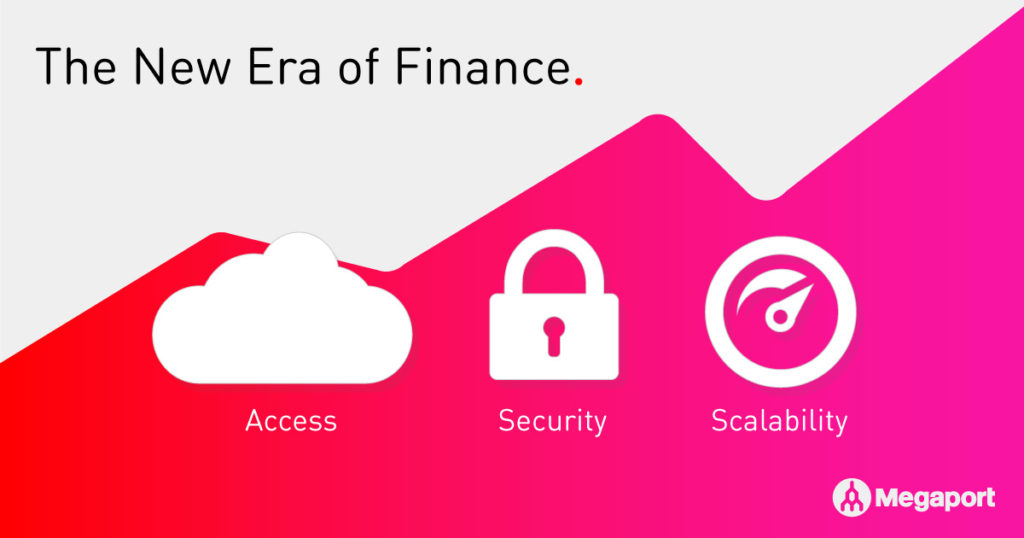
3 Ways Connectivity is Enabling a New Era of Finance Innovation
- Cloud networking
- April 17, 2019
- RSS Feed
Innovation in the Financial Services industry is booming. Here’s how connectivity is impacting this new era.
We’ve all seen the headlines. A new breed of agile Fintech innovator has turned the Financial Services industry on its head – creating powerful new digital services, tailored to the demands of today’s consumers. They’ve changed the industry, and now there’s no turning back.
In many ways, the Financial Services industry was the perfect target for digital disruption. Held back by complex established processes and legacy technology footprints, for many of the world’s largest and most successful financial institutions, fast transformation simply hasn’t been an option – even when they’ve recognised a consumer need that begs to be met.
That opened the door for a new kind of finance innovator – one empowered by new tools and technical capabilities, unburdened by ‘the old ways’, and often with no formal background in the finance sector at all.
Without a doubt, innovative ideas have been these new Fintechs’ greatest asset – but really, that’s only part of the picture. This whole industry transformation simply wouldn’t have been possible without recent advances in cloud technology and connectivity. Here are three reasons why:
Powerful IT and development resources are more readily accessible
Thanks to the cloud, powerful IT resources are no longer only available to enterprises with the resources to buy them outright. With flexible pricing models and no need for costly on-premises infrastructure, the rise of the cloud has put enterprise-grade tools and capabilities into the hands of anyone with a game-changing idea.
For the first time, it’s levelled the technology playing field – enabling smaller players to disrupt the biggest names in their industry. In the Financial Services space, it’s shifted the balance of power, taking away the resource advantage gained by the biggest institutions, and forcing them to innovate at the speed dictated by today’s agile Fintechs.
Better cloud connectivity has even enabled entirely new approaches to service development that perfectly suit smaller Fintechs. Cloud development platforms enable anyone, anywhere to collaborate on projects, spin up test environments, and deliver incredible new solutions faster than ever before.
Positive impacts on security have built up consumer trust
In the past, the ability to secure digital Financial Services solutions has been a major barrier for new market entrants. Around the start of the internet era, the first wave of what we now know as Fintechs had a huge hurdle to overcome – winning consumer trust.
People weren’t comfortable sharing financial data over the internet, let alone with a new company they hadn’t heard of before. Over time, as people became more comfortable doing business online, that fear went away – but new security concerns crept in when Financial Services providers started to host their services in the cloud.
Today, the sheer strength of the biggest Cloud Service Providers and widespread cloud adoption has won consumers and businesses over once more. Now, sophisticated cloud solutions are protected by the best in the business, and modern connectivity options such as Network-as-a-Service help Fintechs monitor traffic to keep an eye on data that’s in transit.
It’s a win/win for Fintechs and consumers. There’s total confidence in new digital finance services, and far less manual security work for the Fintechs to handle themselves – keeping them agile and able to act quickly when customer needs change.
Bandwidth and service scalability support explosive growth
Successful startups are known for their near-vertical growth charts, turning a new market entrant into a household name incredibly quickly. Getting your service out there and generating that kind of traction in the market takes a lot of skill and effort, but without a flexible technology and connectivity foundation, supporting it would be challenging to say the least.
In days gone by, if demand suddenly surged for your new digital service, it wasn’t always cause for celebration – far from it, in fact. If you weren’t set up to rapidly scale your bandwidth, a spike in demand could bring a fledgling service to its knees – turning new customers away and existing customers off in equal measure.
Today, both cloud services and the modern connectivity methods used to connect to them are incredibly flexible. Fintech startups and established institutions alike can start out small, paying only for the limited bandwidth they need, then provision responsive and scalable bandwidth on-demand as the number of customers they serve increases.
If you’re a Financial Services company looking to access powerful cloud services or infrastructure in a secure, scalable way, talk to us today. Whatever point your starting from – whether you’re a fresh Fintech, or an established Financial Services institution – we can help you connect to the services you need, in a way that’s perfectly aligned with your business and growth goals.


